Occupational Safety Training in Measurement Equipment Manufacturing
99,000 ₫
Note: The above price is calculated for one person, the price may fluctuate depending on the number of trainees participating in the course and depending on market movements. For more accurate pricing support, please refer to the quotation table or contact our consulting staff directly.
Occupational safety is an important issue in measuring equipment manufacturing factories and needs to be addressed promptly to ensure the health and safety of workers, and to enhance the reputation of businesses. The Occupational safety training course is one of the effective solutions to raise awareness about accident prevention for workers participating in measuring equipment manufacturing.
Table of Contents
Toggle1. Overview of Measuring Equipment
a. What is Measuring Equipment?
Measuring equipment refers to tools or devices used to measure physical, chemical, electronic, or other parameters. They are used across various fields, including manufacturing, construction, healthcare, science, and information technology.
Measuring equipment can measure basic quantities such as length, area, volume, mass, time, temperature, pressure, accuracy, toxicity, frequency, current, voltage, energy, and many other parameters. Measuring equipment plays an important role in ensuring product quality, safety inspection, quality control during production, and research and development.

b. Machinery for Manufacturing Measuring Equipment
The production process of measuring equipment can be divided into several stages depending on the specific type of equipment. However, below are some commonly used machines in measuring equipment manufacturing:
- Metal cutting and processing machines: Used to cut and process metal components of measuring equipment such as main blocks, mechanical structures, and other parts.
- Stamping and pressing machines: Used to stamp and press metal parts into desired shapes, such as the casing of measuring equipment.
- Metal lathes: Used to turn metal parts according to the specific dimensions and shapes of the measuring equipment.
- Metal grinding machines: Used to grind and finish metal components to ensure the accuracy of the equipment.
- Metal milling machines: Used to mill metal components into desired shapes for measuring equipment.
- Plastic processing and molding machines: Used to process plastic components, creating parts with high durability and precision.
- 3D printers: Used to create 3D models of measuring equipment to verify accuracy before producing official components.
- Measuring instruments: Used to measure and check the accuracy of parts and equipment before use.

c. Measuring Equipment Manufacturers in Vietnam
Famous manufacturers of measuring equipment include:
- Fluke Corporation: A multinational company based in the United States, specializing in measuring and testing products such as multimeters, voltage meters, network analyzers, temperature testers, etc.
- Keysight Technologies: Specializes in producing measuring and testing devices for electronic applications, including broadband equipment and signal detection devices.
- Agilent Technologies: Provides measurement solutions for scientific and technological applications, including network analysis, frequency measurement, and voltage measurement.
- Tektronix: Specializes in measuring and signal analysis products, including amplifiers, signal detectors, and analyzers.
- Rohde & Schwarz: Produces electronic measuring instruments, including signal detection devices, signal analyzers, and telecommunication signal meters.
- Anritsu Corporation: Produces measuring and testing devices for electronics and telecommunications, including frequency testers and voltage meters.
- Leica Geosystems: A leader in surveying and geospatial data management, providing high-quality measuring instruments such as optical devices and coordinate measuring machines.
- Nikon Corporation: Produces measuring instruments and imaging systems, including cameras, microscopes, and surveying instruments.
- Siemens: A multinational company producing measuring and testing products, including electrical testing devices, motors, and electrical systems.
- Honeywell: Produces measuring and testing products in industries such as petrochemicals, chemicals, and environmental monitoring.
d. Specific Jobs in Measuring Equipment Manufacturing Plants
Group 1
- Chief Executive Officer, Deputy CEO, and Department Heads in measuring equipment manufacturing plants.
Group 2
- Safety Officers: Manage safety in the plant, design safety procedures, monitor and enforce employee compliance with safe working processes.
Group 3
- Material procurement: Accountants and purchasing managers negotiate with suppliers to acquire necessary materials for production.
- Production: Workers perform manufacturing processes such as mechanical processing, assembly, quality inspection, and product packaging.
- Quality inspection: Quality staff ensure products meet established quality standards, using specialized measuring instruments to verify technical specifications.
- Maintenance and repair: Technicians maintain and repair production equipment to ensure efficient operation.
- Production management: Supervisors monitor production, ensuring products are manufactured on time, in the correct quantity, and meet quality standards.
- Packing and shipping: Staff ensure products are properly packaged and delivered safely and on time.
Group 4
- Office, service, sales, and marketing work.
- Production management, quality management, human resources, material management, finance, and accounting.
- Product design and research: Technical staff research, develop, and design new products, optimizing performance and functionality.

e. Overview of Measuring Equipment on the Market
Common measuring equipment available on the market includes:
- Rulers: Used to measure length, width, thickness, distance, and angles.
- Electronic scales: Measure the mass of objects from small to large, applicable in healthcare, food, and industrial production.
- Thermometers: Used to measure the temperature of liquids, gases, and objects.
- Hygrometers: Measure the humidity of materials, especially in agriculture.
- Pressure meters: Measure the pressure of liquids and gases in construction, industrial, and automotive applications.
- Sound level meters: Measure noise levels in work environments, especially in industrial settings.
- Light meters: Measure the brightness of objects, particularly in electronics, lighting, and lamp industries.
- Vibration meters: Measure vibrations of equipment and machinery to ensure stable operation.
- Thickness gauges: Measure the thickness of materials, particularly in manufacturing and construction.
- Resolution meters: Measure the resolution of display devices, especially in electronics and computing.
2. Overview of Occupational Safety Training for Measuring Equipment Manufacturing
This article focuses on issues related to Group 3, as they are directly involved in production and face the highest occupational safety risks. For information on other groups, see here.
a. What is Group 3 Occupational Safety Training?
- Group 3 occupational safety training consists of classes that raise workers’ awareness of preventing workplace accidents.
- The training course helps workers recognize hazards, prevent risks, and reduce the occurrence of workplace accidents.
REGISTER FOR OCCUPATIONAL SAFETY TRAINING SERVICE
b. Training Duration
Initial safety training duration:
- Total training time is at least 24 hours, including testing.
- 8 hours of theory on policies and occupational safety laws
- 8 hours of basic occupational safety and hygiene theory
- 4 hours of specialized training theory
- 2 hours of practical training on specialized content
- 2 hours of theoretical exam at the end of the course
The training center will distribute the hours across multiple sessions depending on worker schedules. Typically, there are 6 sessions over 3 days if the company can arrange continuous training time.
Periodic safety training duration:
- Before the occupational safety card expires, workers must undergo periodic safety training, with a duration of at least 50% of the initial training time.
Explanation: The total duration of periodic occupational safety training is at least 12 hours, including testing. Upon completing the periodic training and passing the exam, workers are reissued or renewed the occupational safety card.
c. Training Content
| No. | TRAINING CONTENT | TRAINING TIME (HOURS) | |||
| Total | Including | ||||
| Theory | Practice | Exam | |||
| I | Policies and occupational safety and hygiene laws | 8 | 8 | 0 | 0 |
| 1 | Overview of the legal and regulatory framework on occupational safety and hygiene. | 6 | 6 | ||
| 2 | Standards and technical regulations on occupational safety and hygiene. | 1 | 1 | ||
| 3 | Specific regulations from state management agencies on occupational safety and hygiene when building, expanding, or renovating facilities for manufacturing, using, storing, and inspecting machines, equipment, materials, and substances requiring strict occupational safety and hygiene measures. | 1 | 1 | ||
| II | Basic occupational safety and hygiene knowledge | 8 | 8 | 0 | 0 |
| 1 | Basic knowledge of hazardous and harmful factors in the workplace. | 4 | 4 | ||
| 2 | Methods to improve working conditions. | 1 | 1 | ||
| 3 | Safety culture in production and business. | 1 | 1 | ||
| 4 | Rights and responsibilities of employers and employees; policies and regimes regarding occupational safety and hygiene; functions and duties of safety officers. | 1 | 1 | ||
| 5 | Occupational safety rules, safety signs, instructions, use of safety equipment, personal protective equipment, first aid skills, and occupational disease prevention. | 1 | 1 | ||
| III | Specialized training content | 6 | 4 | 2 | 0 |
| Comprehensive knowledge of machines, equipment, hazardous substances; analysis, evaluation, risk management for occupational safety and hygiene; safe working procedures with machines, equipment, and hazardous substances. | 6 | 4 | 2 | ||
| IV | Final safety training exam | 2 | 2 | 0 | 0 |
| Total | 24 | 22 | 2 | ||
See more training content of all 6 groups
d. Occupational Safety Card
After completing the occupational safety training and passing the exam, workers will be issued a Group 3 occupational safety card (commonly referred to as Group 3 occupational safety certificate).
The Group 3 card clearly shows information such as name, date of birth, specific job, and work environment. It also includes training duration, a red stamp, and a signature confirming course completion.
According to regulations in Clause 2 of Article 24 of Decree 44/2016/ND-CP, there are two cases:
- If the employer and employee have a labor contract, the employer must sign, stamp, and endorse the safety card for the Group 3 worker after completing training and passing the exam from the occupational safety training unit.
- If the worker is freelance or seasonal and does not have a labor contract, the training unit must sign, stamp, and endorse the safety card after training and exam completion.

3. Identifying hazards affecting workers during measurement device production
Producing measurement devices also has potential hazards as follows:
- Voltage: Measurement devices may use power sources or batteries to operate, so workers must handle electrical currents and the risk of electric shock.
- Toxic substances: During production, harmful chemicals such as cleaners, dyes, or solvents may be used. If not used and stored properly, these substances can harm workers’ health.
- Noise: Measurement devices are often manufactured in factories and workshops, which may lead to high noise levels and harm workers’ hearing.
- Temperature: Some measurement devices, such as thermometers, may be produced at high temperatures. This can lead to the risk of burns or heat-related injuries.
- Impact: During transportation and production, measurement devices may be subjected to impacts or breakage, posing a risk of injury to workers.
4. Common occupational accidents for workers in measurement device production
Common occupational accidents during measurement device production include:
- Electrical accidents: The voltage in measurement devices is often high; improper use can endanger workers. Employees must ensure that electrical devices are used correctly and maintained regularly.
- Accidents due to improper device usage: Some measurement devices can be dangerous if not used properly. Production staff must be trained on how to use measurement devices safely.
- Accidents due to chemical use: Many measurement devices are used in environments containing hazardous chemicals. Production staff must be trained on how to operate devices safely in such environments to protect themselves and colleagues.
- Accidents due to faulty devices: Measurement devices must be regularly maintained to ensure they operate properly and safely. Using faulty devices can endanger workers.

5. Safety measures when participating in measurement device production
Safety measures when participating in measurement device production include:
- Ensure workplace hygiene: keep the factory clean, well-ventilated, and free from pollutants or toxic agents.
- Use protective equipment: workers must wear full personal protective equipment such as helmets, safety glasses, gloves, anti-puncture shoes, protective jackets, etc.
- Occupational safety training: train factory staff on safety knowledge, proper use of protective equipment, and safe working techniques.
- Perform regular maintenance: regularly inspect and maintain production equipment to ensure it always operates correctly and safely.
- Use safe materials: ensure that all materials meet standards and contain no harmful substances.
- Check product quality: inspect products before release to ensure they meet technical and safety standards for users.
- Provide safety information: provide full safety information related to products to consumers and ensure product registration and licensing according to legal regulations.
- Periodically conduct workplace environmental monitoring in factories, collect and analyze harmful factors for workers, and adjust to reduce hazards to prevent occupational diseases.
6. Benefits of occupational safety training for measurement device production
An Toan Nam Viet provides your business with the following benefits after completing occupational safety training courses in accordance with Decree 44/2016/ND – CP on Occupational Health and Safety for companies and enterprises:
- Workers can identify potential occupational hazards and take preventive measures to avoid accidents.
- Your business can establish risk prevention measures in production, operation, and maintenance processes.
- Reduce costs associated with potential safety risks in the workplace.
- Uninterrupted production helps increase labor productivity and product quality.
- Ensure compliance with labor safety laws and avoid legal risks.
- Create credibility and professionalism in all aspects, enhancing your company’s brand.
Nam Viet’s training courses are solutions to prevent and protect individuals from external hazards that may cause injury or, in severe cases, death.
REGISTER FOR OCCUPATIONAL SAFETY TRAINING SERVICE
7. Customer feedback after completing occupational safety training for measurement device production
An Toan Nam Viet has many years of experience accompanying businesses in Vietnam in general and in southern provinces in particular. This responsibility is extremely valuable to Nam Viet, so its Occupational Safety Training is increasingly professional. The motivation for Nam Viet’s growth comes from positive feedback and suggestions from businesses. Below are feedback from our valued partners.
Hoa Dat Construction and Trading Joint Stock Company
“Nam Viet’s service has greatly helped us simplify occupational safety and complete safety documentation for operations. The consulting team responded promptly to our inquiries. Five stars for Nam Viet.”
See more customer interviews after using the service from An Toan Nam Viet
8. Occupational Safety Training Capacity of An Toan Nam Viet
An Toan Nam Viet is a reputable and quality occupational safety training center in Vietnam. Training sessions are continuously conducted at factories, production plants, or construction sites nationwide (63 provinces in Vietnam).
REGISTER FOR OCCUPATIONAL SAFETY TRAINING SERVICE
Occupational Safety Training License
- An Toan Nam Viet has been inspected and certified by the Department of Safety under the Ministry of Labor, Invalids and Social Affairs, confirming our capacity to provide occupational safety and hygiene training.

Training Materials and Lectures
- Before being used in OST courses, training materials are reviewed to ensure accuracy and effectiveness.
- Teaching methods follow Nam Viet standards, developed by experts in occupational safety training to maximize knowledge absorption for trainees.
Facilities
- Controlling classroom factors improves teaching efficiency and trainee knowledge absorption.
- Our training facilities provide spacious classrooms meeting standards for area, lighting, and training equipment.
9. Nationwide reputable occupational safety training center
At An Toan Nam Viet, we prioritize professional dedication to occupational safety training. Our mission is to equip workers with knowledge for self-protection, contributing to national development.
We meticulously prepare all tools, equipment, teaching materials, documents, sound, and lighting to ensure effective training.
Our instructors are experts with years of experience, including research on hazard identification and prevention across industries.
Lectures are practical and delivered vividly for easy understanding, allowing trainees to learn comfortably. Knowledge is aligned with Decree 44/2016/ND-CP.
Thus, trainees learn hazard prevention measures and how to protect themselves effectively in the workplace.
Our training center proudly provides professional and reliable occupational safety training with advantages:
- Competitive training costs while ensuring quality.
- Flexible training schedules adapted to company production.
- Quick certification procedures compliant with legal regulations.
- Experienced instructors with many years in the field.
- Controlled classrooms to maximize teaching efficiency and knowledge absorption.
- Lectures tailored to corporate occupational safety.
- Dedicated and professional support for clients quickly and accurately.

10. Additional reference materials for occupational safety training in measurement device production
- Occupational safety materials for measurement device production
- Occupational safety training materials set
- Occupational safety training exam set
- Occupational safety training curriculum for measurement device production
- Occupational safety multiple-choice test for measurement device production
1 review for Occupational Safety Training in Measurement Equipment Manufacturing
No comments yet

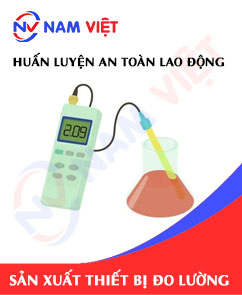
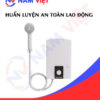
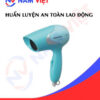



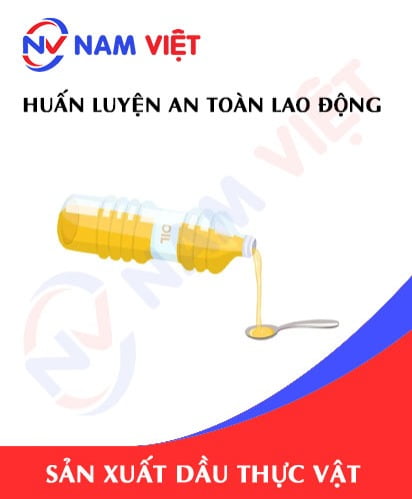
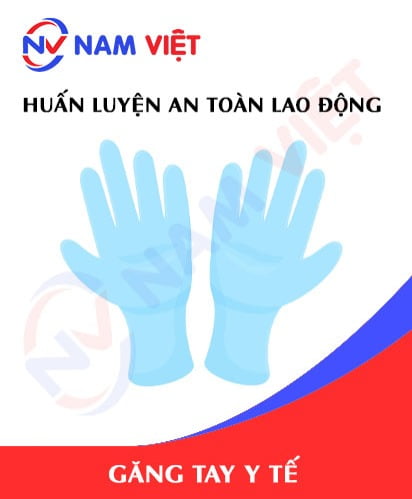






namchinh.haiphong341
Dịch vụ huấn luyện an toàn lao động rất tốt nhé, giảng viên dạy rất sinh động dễ hiểu!